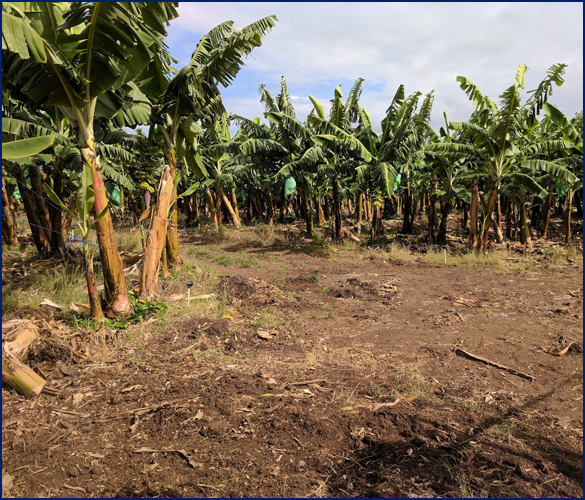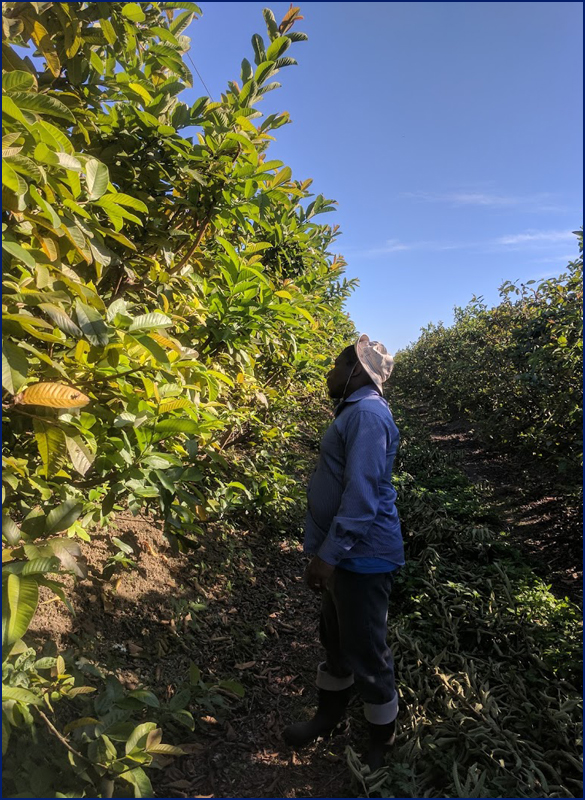Collecting nematode samples from fruit and nut trees
Tools for sampling: spade, hand trowel, or soil auger; plastic bag, marker, tag
Number of samples: each sample should consist of several sub-samples; collect enough samples to represent the situation in the field; the greater the number of sub-samples / cores for each sample, the more accurate the assessment will be; collect at least 10-20 sub-samples from a given area, and combine these into one composite sample; when sampling single trees, take 2-5 subsamples depending on the size of the tree.
Sampling pattern: nematodes are rarely distributed evenly in a field, so it’s important to collect from several areas within the field or orchard; if symptoms in the field or orchard are obvious, collect separate samples from areas of poor and good growth; collect samples from the tree dripline, at a depth of between 6 inches to 36 inches depending on the point that feeder roost are present; sampling patterns can be random or systematic.

Time of sampling: this will obviously have a large impact on the type and number of nematodes that are found; plant-parasitic nematode typically increase to their highest levels during the growing (wet) season and reduce during the off (dry) season.
For diagnostic purposes, perennial crops should be sampled during the active growing period (rainy/growing season). For predictive sampling, samples can be taken prior to establishment of the new orchard, or preferably at the end of the previous crop / orchard.

Other considerations: avoid sampling very wet or very dry soil; whenever possible also collect root samples (especially fine feeder roots as nematodes prefer to feed on them rather than larger roots) from the same locations as for soil, and store roots in the same sample bag to help preserve the roots; avoid sampling dead plants, as nematodes will have moved away from these.
Sample care: collect samples in strong plastic bags, and label them clearly; record crop and cultivar, date, location; nematodes are very sensitive, so don’t keep samples in direct sunlight or in a closed vehicle, but rather store in a coolbox or other container; when samples need to be stored longer than 1-2 days, keep them in a refrigerator (45-50F).

